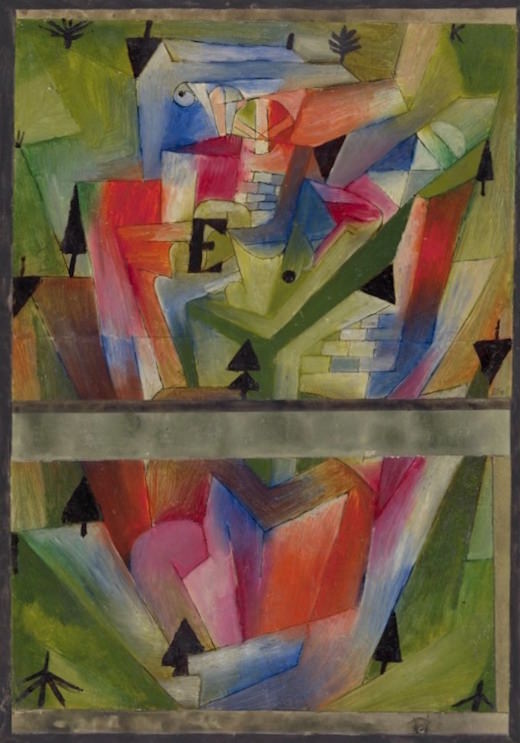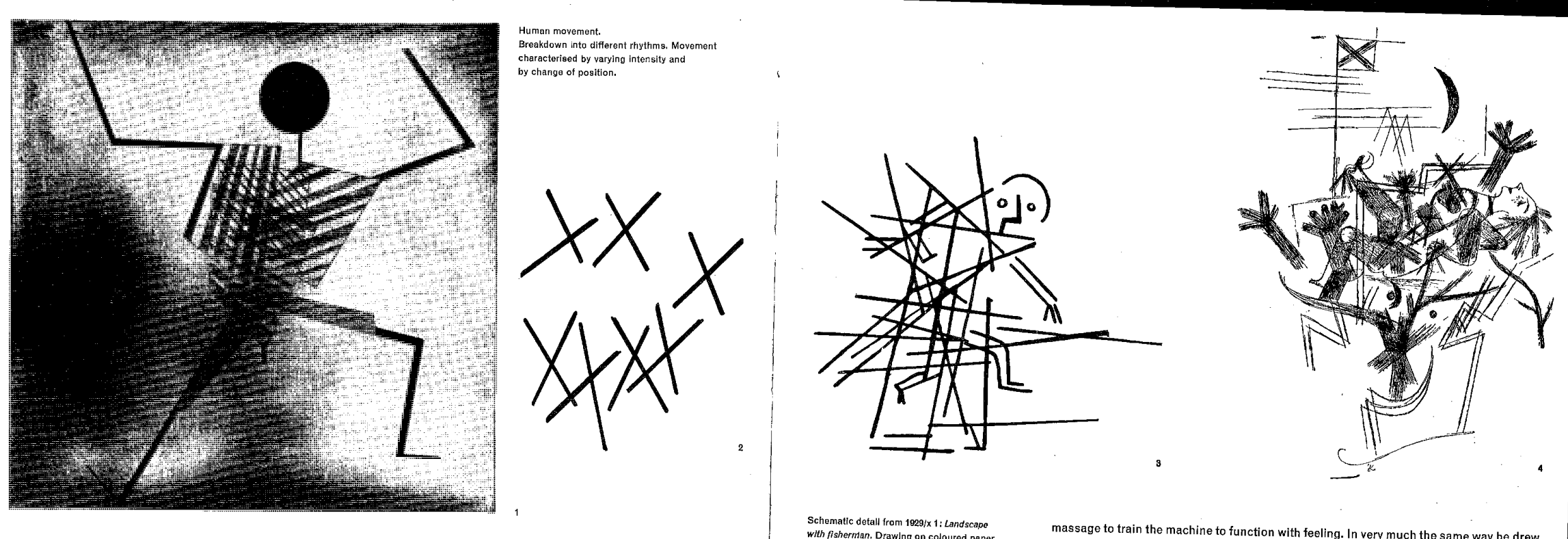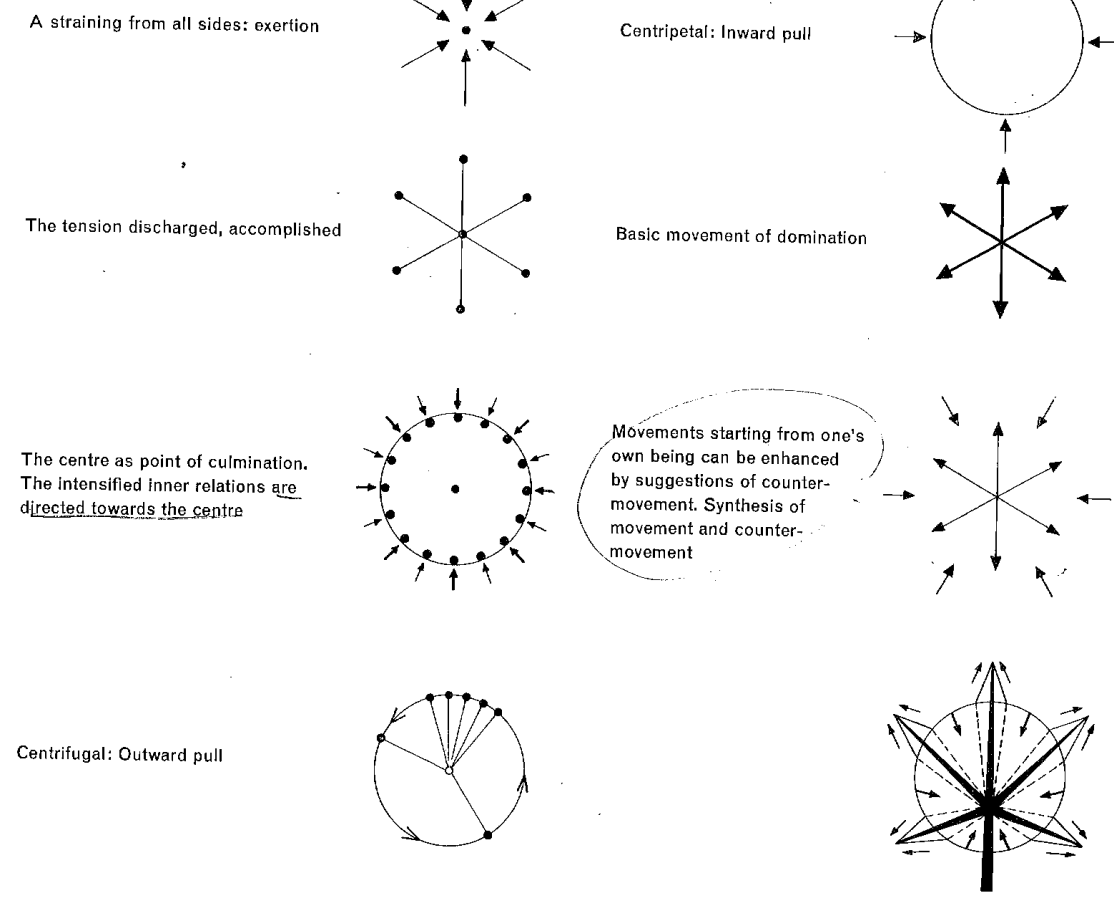I was particularly struck by Drucker's discussion of the formal systemization of the visual arts (pg 25), as aesthetics and methodology may seem idiosyncratic processes.
Drucker cites Paul Klee as one of the early twentieth century visual artists championing universal forms and a methodology to visual making. For Klee—father of abstraction and teacher at the Bauhaus—the process of representation outweighed the object represented.
 Fire at Full Moon, 1933
Fire at Full Moon, 1933
 Paysage près de E. (en Bavière), 1921
Paysage près de E. (en Bavière), 1921
"I should like to create an order from feeling, and going still further, from motion." Paul Klee
Klee's drawings in The Thinking Eye use pure form (vs pictorial representations) to evoke, excite, and allude to dimensionality, directionality, and dynamism.
 distillation of dance
distillation of dance
abstraction of human movement
 static compositions suggesting energy/movement
static compositions suggesting energy/movement
 crafting dimensionality
crafting dimensionality